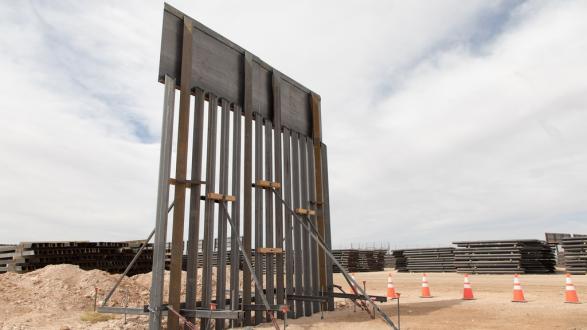President Trump’s border wall would be an ineffective, wasteful, and indelible symbol of everything our inclusive, immigrant nation is not. But it just might be possible to build the wall, avoid another shutdown, and not completely squander an estimated 59.8 billion taxpayer dollars. Here’s how:
Let’s build a “Wall of Freedom and Opportunity” stretching along the southern border. Part of this wall could be a special economic zone (SEZ) where any person could legally live and work and businesses could operate under free-market institutions.
It’s not as far-fetched as it sounds. The new president of Mexico, Andrés Manuel López Obrador, is already pushing for a “free zone” along the U.S. border. The zone would run from the Gulf of Mexico to the Pacific Ocean at a width of 15.5 miles and would aim to boost the economy and reduce migration to the United States by creating more jobs in Mexico.
A Special Economic Zone along the southern border could start as an agreement between the countries to designate a strip along the length of the border as having a special legal status.
Under the current proposal, people in the free zone would enjoy tax reductions, a minimum wage increase, and lower fuel prices. In my experience helping countries pilot reforms through these zones, those measures don’t go far enough. In order to thrive, the “Wall of Freedom and Opportunity” would focus on regulatory and administrative institutions.
Think about it this way: migrants from Central America are coming to the United States because of its safety and opportunities—safety and opportunities largely resulting from the strength of our institutions. Businesses want to employ these migrants and they also want institutions that are more stable and market-friendly than they can find in Mexico or Central America.
What if we created a border where everyone benefits from what makes the United States so great? Actually, while we’re at it, there’s a lot of room for improvement in the United States; what if both countries used the SEZ as a chance to incubate better regulations, administration, and infrastructure than either country currently enjoys?
The bar is pretty low. We just need something a little better than piling up $59.8 billion of our own money, setting it on fire, and permanently branding ourselves as racist fools.
An SEZ along the southern border could start as an agreement between the countries to designate a strip along the length of the border as having a special legal status. The strip could be divided into segments, with each segment being under a different special administration. The administrations of segments with existing populations could be determined by the local governments with jurisdiction over those areas.
For segments that aren’t already populated, the administrations could be new public-private social enterprises that invest heavily in infrastructure and new regulatory frameworks. The administrations could collect revenue based on a metric of good governance, such as the value of land through either a land-value tax or by leasing out the land to occupants. Those that govern the best would attract the most people and businesses and would earn the most revenue.
Don’t get me wrong, there’s a lot that could go wrong with this idea. Administrators would need to make the institutions pretty great for economic growth to happen in desert stretches. They would need accountability and incentive structures to prevent abuse. And getting local, state, and federal governments to transfer responsibility to the administrators would be difficult.
But the bar is pretty low. We just need something a little better than piling up $59.8 billion of our own money, setting it on fire, and permanently branding ourselves as racist fools.
By piloting new models for governance, zones like this could show us all better ways of structuring regulatory institutions throughout our countries.
Maybe all the buildings in the zone running along the southern border would count as enough of a “wall” to save us from actually constructing a real one, but if we must pile on the concrete, we could still do it with fewer taxpayer funds than without an SEZ. In exchange for having the right to collect revenue from the zone, the administrators could be obligated to help build a wall along the northern edge of their segments and help Customs and Border Patrol monitor it, which means private funding from the administrators would supplement federal funds to help cover the cost. Perhaps that even counts as “Mexico paying for it,” an idea even President Trump seems to have abandoned as wishful thinking.
In the end, this “Wall of Freedom and Opportunity” could do much more than solve our short-term political problems. By piloting new models for governance, zones like this could show us all better ways of structuring regulatory institutions throughout our countries. They would channel private capital for the public good, promote security, address the challenges of migration, and build a more inclusive and free society all at once, if that’s what we really want to do.
Or we could just build a new national monument to ignorance and fear.
____________________
Michael Castle Miller is a Pacific Council member and a legal and policy advisor who has helped develop special economic zone programs for over twenty countries, including Mexico. He is the Founder and CEO of Politas Consulting and Executive Director of both Refugee Cities and Politas Labs, a new think tank dedicated to overcoming political barriers to critical global concerns through policy design.
The views and opinions expressed here are those of the author and do not necessarily reflect the official policy or position of the Pacific Council.




